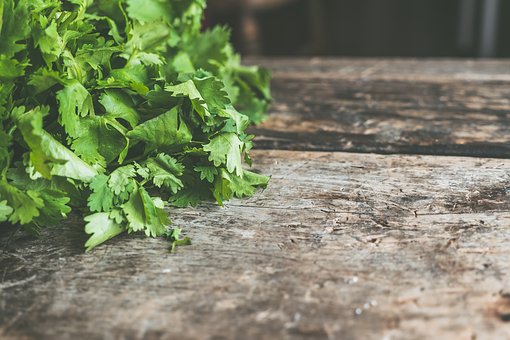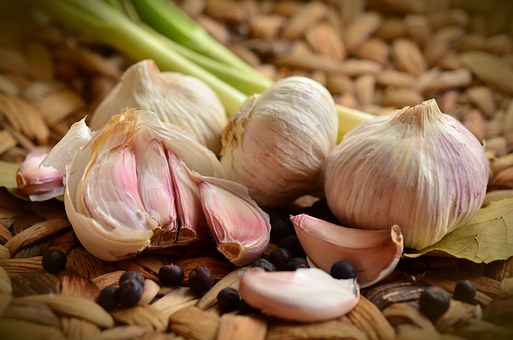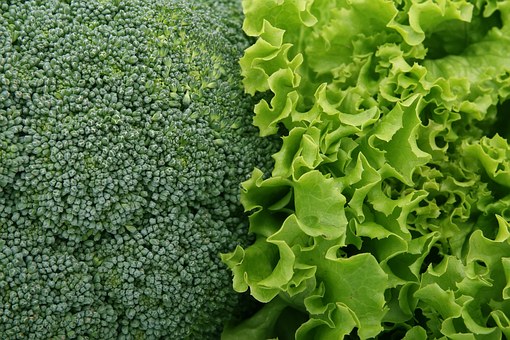Coriander: A Beneficial Herb and Spice
© HealthyMuslim. See Terms and Conditions

Coriander (Coriandrum sativum), or cilantro as it is also known as, is used as both a herb (the leaves) and a spice (the seeds). Fresh coriander leaves resemble its close family member, flat-leaf parsley. Coriander seeds are dried when used as a spice, and have a similar flavor to citrus peel and sage, they are available in whole or ground forms.
The oil found in coriander is rich in a variety of phytonutrients including carvone, geraniol, limonene, borneol, camphor, elemol and linalool. Coriander also contains flavonoids and active phenolic acid compounds, including caffeic and chlorogenic acid, which have been found helpful in fighting cancer, diabetes and heart disease. Coriander is a source of magnesium and manganese.
Health Benefits
When coriander was added to the diet of diabetic mice, it helped stimulate their secretion of insulin and lowered their blood sugar.
Coriander was given to rats that had been fed a high-fat and high-cholesterol diet. The spice lowered total cholesterol and triglycerides significantly.
Antibacterial Benefits
Researchers isolated a compound in coriander called dodecenal, which in laboratory tests was twice as effective as the commonly used antibiotic drug gentamicin at killing salmonella.
Digestive health
Researchers examined the effect of coriander combined with other spices on digestion and found the spice mix enhanced the activities of pancreatic enzymes and also stimulated bile flow and secretion.
Tips on Using Coriander
- Fresh coriander leaves should be vibrantly fresh and deep green in color.
- Buy whole coriander seeds instead of coriander powder, as the powder loses its flavor more quickly. Whole coriander can be ground at home in a spice grinder or pestle and mortar.
- Fresh coriander should be stored in the refrigerator, where it will keep for about three days.
- Add coriander seeds and fresh coriander to soups, broths, curries and salad dressings.
- Coriander is easy to grow at home in the garden or on a windowsill. The seeds will sprout quicker if they are broken up. Crack the seeds with a rolling pin or pestle and mortar so that each seed divides into 2 halves, before planting them in warm soil.
References
- Chithra V, Leelamma S. Coriandrum sativum changes the levels of lipid peroxides and activity of antioxidant enzymes in experimental animals. Indian J Biochem Biophys. 1999 Feb;36(1):59-61.
- Chithra V, Leelamma S. Hypolipidemic effect of coriander seeds (Coriandrum sativum): mechanism of action. Plant Foods Hum Nutr. 1997;51(2):167-172.
- Delaquis PJ, Stanich K, Girard B et al. Antimicrobial activity of individual and mixed fractions of dill, cilantro, coriander and eucalyptus essential oils. Int J Food Microbiol. 2002 Mar 25;74(1-2):101-109.
- Gray AM, Flatt PR. Insulin-releasing and insulin-like activity of the traditional anti-diabetic plant Coriandrum sativum (coriander). Br J Nutr. 1999 Mar,8 1 (3):203-209.
- Kubo I, Fujita. K, Kubo A, Nihei K, Ogura T. Antibacterial activity of coriander volatile compounds against salmonella choleraesuis. J Agric Food Chem. 2004 Jun 2;52 (11): 3329-3332.
- Platel K, Rao A, Saraswathi G, Srinivasan K. Digestive stimulant action of three Indian spice mixes in experimental rats. Department of Biochemistry and nutrition, Central Food Technological Research Institute, Mysore 570 013, India.
Link to this article: Show: HTML Link • Full Link • Short Link
Share or Bookmark this page: You will need to have an account with the selected service in order to post links or bookmark this page.





|
Related Articles:
- Anti-Inflammatory and Cytoprotective Effects of Selected Pakistani Medicinal Plants in Helicobacter Pylori-Infected Gastric Epithelial Cells
- Evaluation of Disease Modifying Activity of Coriandrum Sativum in Experimental Models
- Cardio Protective Effect of Coriandrum Sativum L. on Isoproterenol Induced Myocardial Necrosis in Rats
- Antifungal Activity, Toxicity and Chemical Composition of the Essential Oil of Coriandrum Sativum L. Fruits
- Assessment of Vitamin and Carotenoid Concentrations of Emerging Food Products: Edible Microgreens
- Flush Out Toxic Heavy Metals With Coriander
- Easy Carrot and Coriander Soup
- Coriander: A Beneficial Herb and Spice
You must be registered and logged in to comment.
Most Popular
Latest Articles
Popular Subjects
Health, fitness and longevity
Based upon the principles of health
in the Qur'an and Prophetic Traditions.
HealthyMuslim.Com
There are two bounties in which
most people lose out: good health
and free time. Al-Bukhari.























